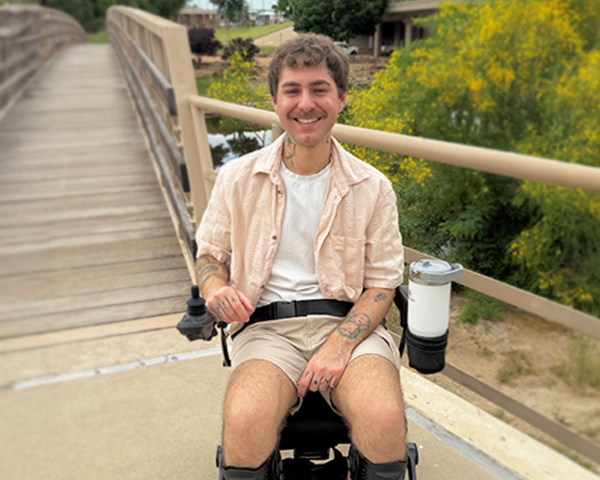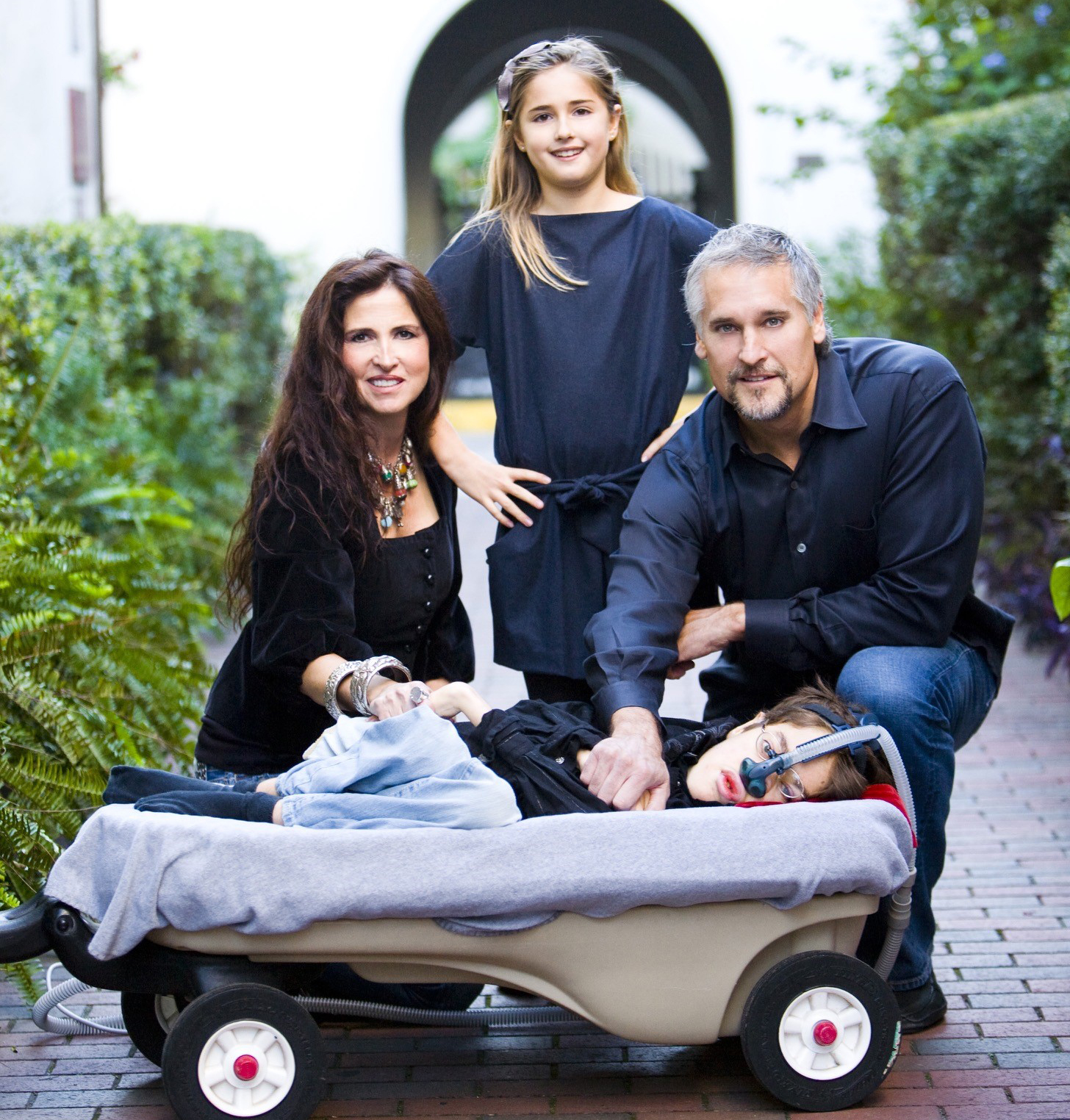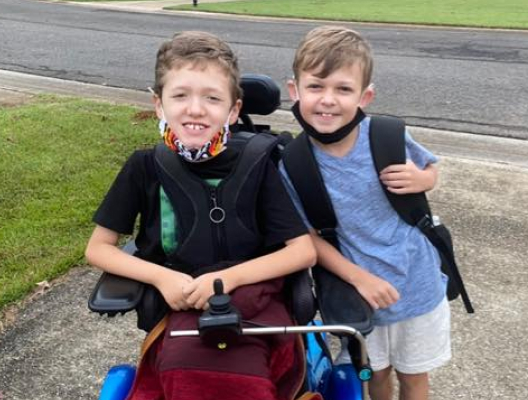

STRENGTHENING the global effort to CURE neuromuscular disease
News Express
From Post-Polio Syndrome to the Boston Marathon: Mary’s Path to Healing
Mary McManus, MSW from Chestnut Hill, Massachusetts is many things. She is a motivational speaker, an author, a poet, and a runner. She also happens to be a polio survivor.
Like many medical journeys, Mary’s road to a diagnosis is long and winding. She first noticed health issues in 1996 when she was in her 40s. Mary explains, “I experienced a limp with my left leg—the leg that had been more affected by paralytic polio that I contracted at age 5 in 1959. During the next decade, I experienced a worsening of the limp, chronic pain, difficulty swallowing, breathing, tingling down my right arm and face, and fatigue.” Through the worsening of symptoms, Mary continued to work as a social worker at the VA, parenting her twins—who were young adults at the time—and managing the household. “Internally,” Mary explains, “I was spiraling into a very dark place in my life. I call it the dark night of my mind, body and soul.”
Mary expressed her concerns to her primary care physician, but during those years, the physician believed it was all psychiatric. “He gave me samples of the antidepressant drug, Paxil, and told me to see a psychiatrist,” Mary states. “I stopped seeing him in the summer of 2006 after suggesting I might have post-polio syndrome and him responding that it didn't exist.”
After reconstructive leg surgery years prior, Mary presented to an orthopedic surgeon who introduced her to another patient who was also a polio survivor. “The surgeon told me this other patient had post-polio syndrome. She wanted me to help manage the care of her husband, who was a veteran, while she had surgery. There are no accidents. I drew from that memory and googled post-polio syndrome.”
In October of 2006, Mary was seen at the International Rehabilitation Center for Post-polio (IRCP) at the Spaulding Rehabilitation Network. There, she was referred for a panel of tests with a new primary care physician who did not know her medical history. Mary says, “She was so compassionate and said she would do everything she could to help me. All of the tests came back indicating no other organic reason for my symptoms other than post-polio syndrome. After going through occupational therapy, physical therapy, speech therapy, being seen at a brace clinic, then swallow clinic, and after an EMG, the team met and shared the diagnosis with me.”
When Mary received the diagnosis of post-polio syndrome, she was relieved, devastated, angry, scared and “felt as though her body betrayed her for a second time.” Post-polio syndrome is a disorder that only affects people who have had polio in which the muscles originally affected by polio become weakened and can atrophy. Joint pain, skeletal problems, and fatigue are possible. Post-polio syndrome usually occurs between 10 and 40 years after the original polio attack.
It was at that point of receiving the diagnoses that Mary knew she was at a crossroads. It was suggested she should quit her award-winning career as a VA social worker, go on disability and prepare to spend the rest of her life in a wheelchair—possibly with a feeding tube, given the difficulty in swallowing food that could be expected to decline as she aged. She could have done all of that.
But instead, Mary began seeing a physical medicine and rehabilitation (PMR) physician specializing in the management of cervical spine pain. From there, she received trigger injections. She was then referred to a physical therapist who Mary refers to as “an absolute earth angel.” The physical therapist told Mary she was not destined to spend the rest of her life in a wheelchair, in addition to helping Mary “reconnect mind with body, which was breached by polio and trauma.” From that experience, Mary began to wish more medical professionals understood “that the body has a tremendous capacity to heal and the power of the mind/body connection can be harnessed to help with that healing.” Mary believes it is counterintuitive to prescribe movement to a polio survivor who presents as deconditioned and is in so much pain simply because of the “old knowledge that if you don’t use it, you will lose it” without additional tools to heal the mind as well. The initial polio virus did damage the neuromuscular connections, but those can regenerate with time and positivity.
Mary explains, “After the diagnosis, I got still and asked for divine guidance. I started writing poetry in which I imagined myself running and being healthy, whole, and free. It inspired my body to heal! On April 20, 2009, I crossed the finish line of the Boston Marathon and have been running ever since.”
Today, Mary advises others going through a similar situation to find a healing path, believe in the body's tremendous capacity to heal, and seek out healing stories to inspire. She sees a chiropractor every other week, which for Mary, helps with pain and tremors while helping to maintain her overall neuromuscular health. “I also use regular meditation and a heating pad while I meditate to visualize myself as healthy, whole, and healed,” Mary explains. “I am now transformed and inspire others with my message of healing, hope, and possibility! I discovered the joy of running, writing poetry, and writing. I am part of an incredible community of runners and have gone from being bullied to a champion on the roads and in my life.”
Mary went from being dismissed by her primary care physician to becoming a thriving runner and motivational speaker. She is supported by her physical therapist, personal trainer, family and a village of runners. She also belongs to David R. Hamilton PhD's Personal Development Club and keeps a collection of healing resources journey on her website marymcmanus.com.
To support future education and research of post-polio syndrome and other neuromuscular and movement disorders, consider donating to the American Neuromuscular Foundation, where every dollar raised directly funds research.
Donate Today to Support Research and Researchers' Education
Every dollar raised is a dollar used to support researchers finding a cure. Administrative and staff assistance is provided by AANEM.
Apply for Research Grants & Awards
-
Development Grant Opportunities
-
Neuromuscular Research Grant Opportunities
-
Research and Educational Awards
Upcoming Events
-
ANF Neuromuscular Research Grants Letter of Intent Deadline
-
ANF Development Grants Letter of Intent Deadline
-
ANF Development Grants Application Deadline
Thank You For Your Support
Together we are helping researchers find treatments and cures for tomorrow and improving the lives of patients with neuromuscular diseases.


